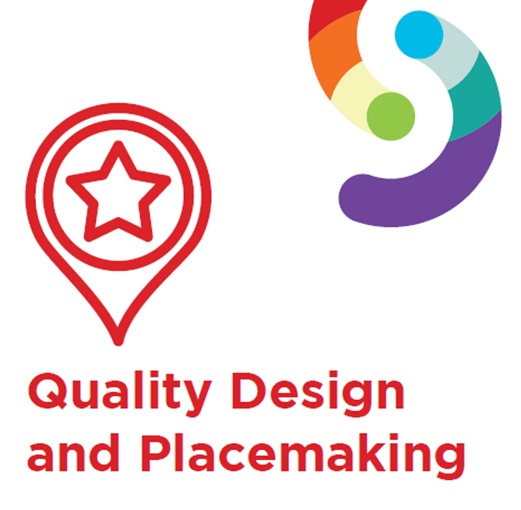Chapter 5

Vision
Create a leading example in sustainable urban design and healthy placemaking that delivers attractive, connected, vibrant and well-functioning places to live, work, visit, socialise and invest in.
Introduction
In line with the provisions of the National Planning Framework (NPF) and the Regional Spatial and Economic Strategy (RSES) the quality of design and character of an area are critical factors for making places attractive and distinctive. ‘Placemaking’ which aims to strengthen the connection between people and the places they share, creating the right types of environments in which people can live work, visit, socialise and invest in, is a key factor in producing attractive and distinctive communities.
Healthy Placemaking seeks to protect and enhance the unique identity and character of places and to facilitate improvements to human wellbeing and the quality of life that comes from the interaction of people and their environment. The development of new strategic development areas alongside significant regeneration lands within South Dublin County further creates opportunities for the development of strong placemaking within the County, delivering attractive and sustainable environments in which to live.
The built environment plays an important role in both the wellbeing of the individual and in the success and vibrancy of the County. All new development in South Dublin County should be designed and delivered in a manner that recognises its importance in the future success of the County and our citizens.
Quality Design, Healthy Placemaking and Climate Action
A key element of healthy placemaking is the provision of a movement network that enables people to choose public transport and active travel measures as their first choice. We must proactively support the delivery of a transport network that offers people healthier modes of transport, modes that will help to reduce carbon emissions and reduce congestion. Streets should be designed for people to move and enjoy, where the space is shared by all users. This approach will play a key role in delivering more attractive places and creating opportunities to be physically active and reduce the negative consequences of car-based commuting.
It is the aim of this plan to achieve an efficient use of land with a focus on key urban centres, and to achieve development densities that can support vibrant, compact, walkable places that prioritise pedestrian movement. The implementation of such measures requires a compact development form and when successfully achieved can play a significant role in climate action, reducing the need for car-based travel and carbon emissions while also facilitating opportunities for the use of more sustainable and renewable energy sources.
Policies and objectives which will have a climate-positive impact have reference numbers indicated in green text.
The policies and objectives set out in this chapter are therefore wide ranging and are critical to maintaining and recognising our existing natural and built environment assets while also sensitively managing and positively influencing the future delivery of sustainable housing and jobs growth, transport interventions and community infrastructure within the County. The creation of healthy and attractive places will also require ongoing improvements to physical infrastructure.
The implementation of such measures within this chapter and subsequent chapters when combined will contribute significantly towards the delivery of successful and sustainable, well-functioning and attractive Neighbourhoods within the County as visually depicted within Chapter 12 of this plan.